Description
RASTRUM™ Allegro: Produce your own 3D cell models in minutes
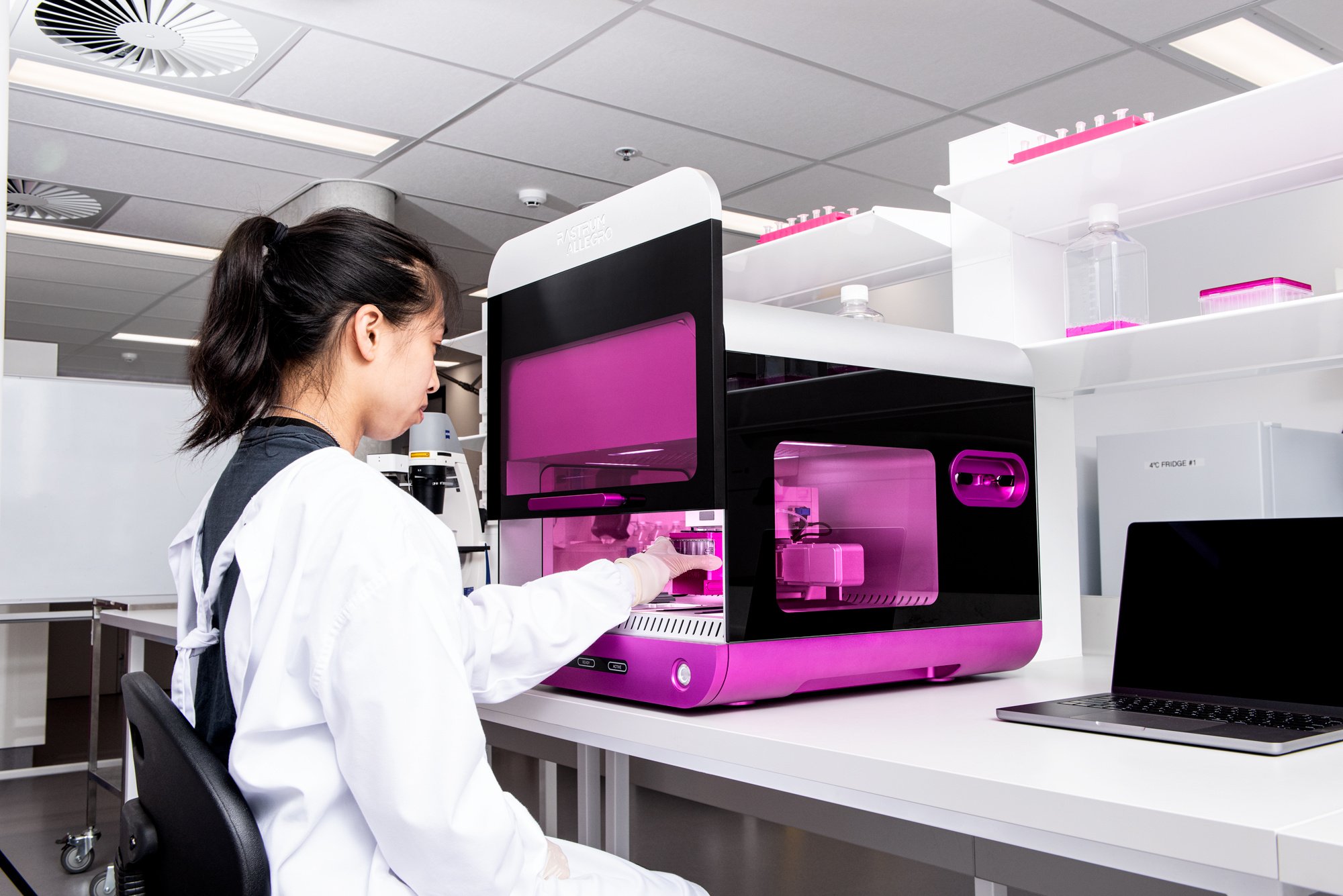
Engineered to meet the demands of drug discovery and translational research, RASTRUM Allegro delivers the reproducibility and scalability you need to advance your research. By streamlining the creation of 3D cell models, it empowers you to optimize therapeutic strategies and accelerate your path to discovery.

How can RASTRUM Allegro help you?
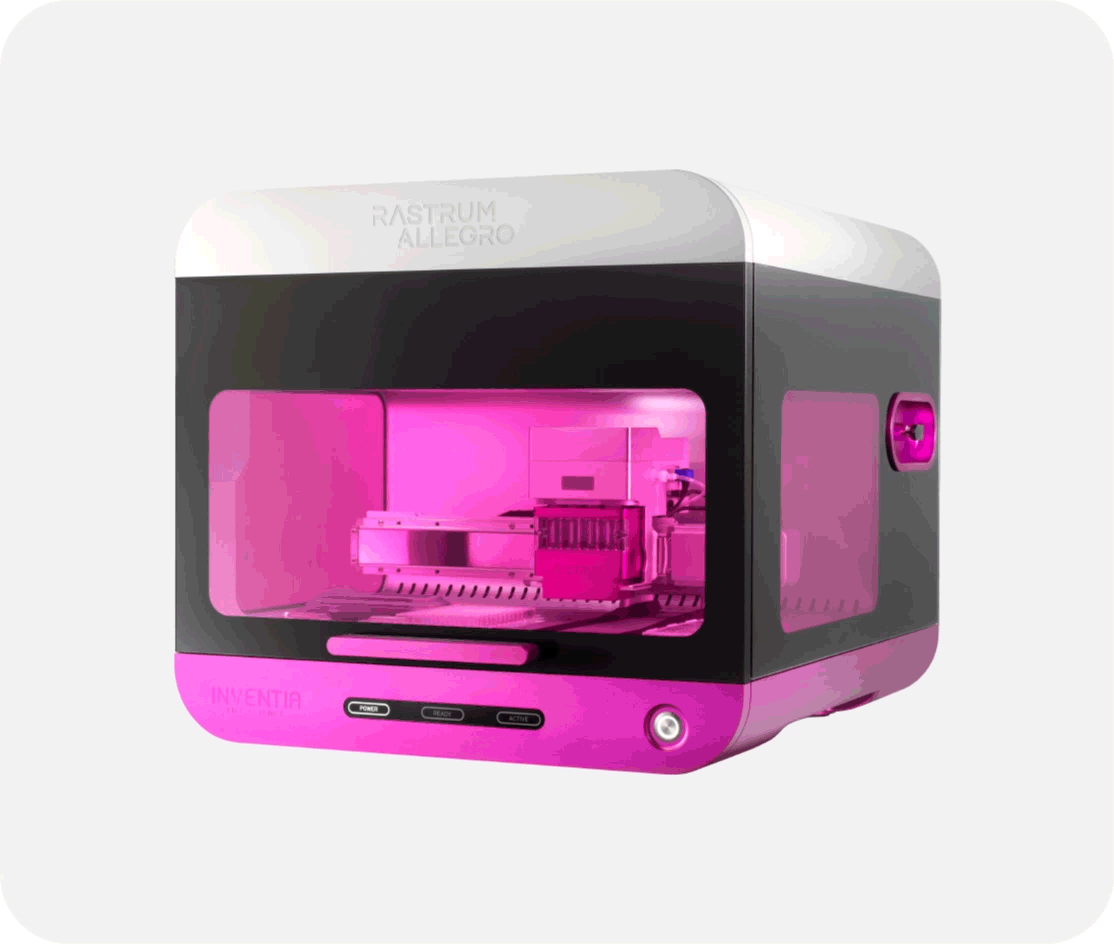
Scale your 3D cell culture
With our drop-on-demand technology and innovative, precision robotics, RASTRUM Allegro allows you to create full plates of 3D cell models in just minutes—producing a 96-well plate in 6 minutes and a 384-well plate in 9 minutes. This efficiency enables scaling to 35+ plates in a single 8-hour day, supporting high-throughput screening applications with ease.
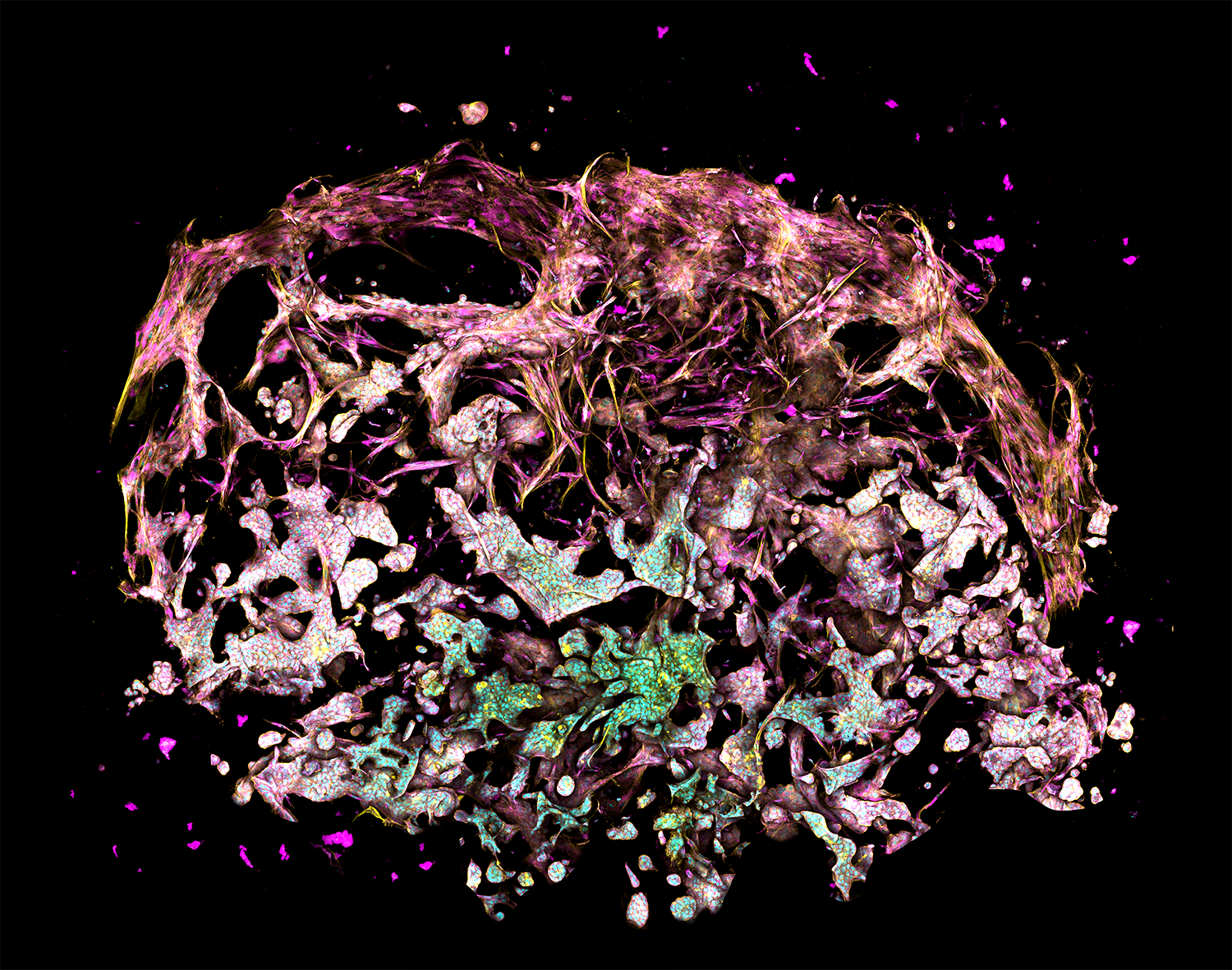
Recreate complex tumor and tissue microenvironments
RASTRUM Allegro enables researchers to interrogate dynamic interactions between key tumor cell types such as cancer, stromal, and vascular cells, advancing insights into disease mechanisms and therapeutic development. From precisely engineered 3D architectures to high-content imaging compatibility, RASTRUM Allegro empowers the exploration of biologically relevant conditions with precision and reproducibility.
The image depicts a lung cancer tri-culture model made with RASTRUM Allegro. Primary normal human lung fibroblasts (NHLFs) were printed with primary Human Umbilical Vein Endothelial Cells (HUVECs) and A549 lung adenocarcinoma cells using RASTRUM’s Imaging Model architecture. Cells were cultured for 7 days and stained using a PhenoVue Cell Painting Kit (Revvity). Cell nuclei (cyan) were labeled with Hoescht, filamentous actin (yellow) with phalloidin, and membrane glycoproteins (magenta) with concanavalin A.
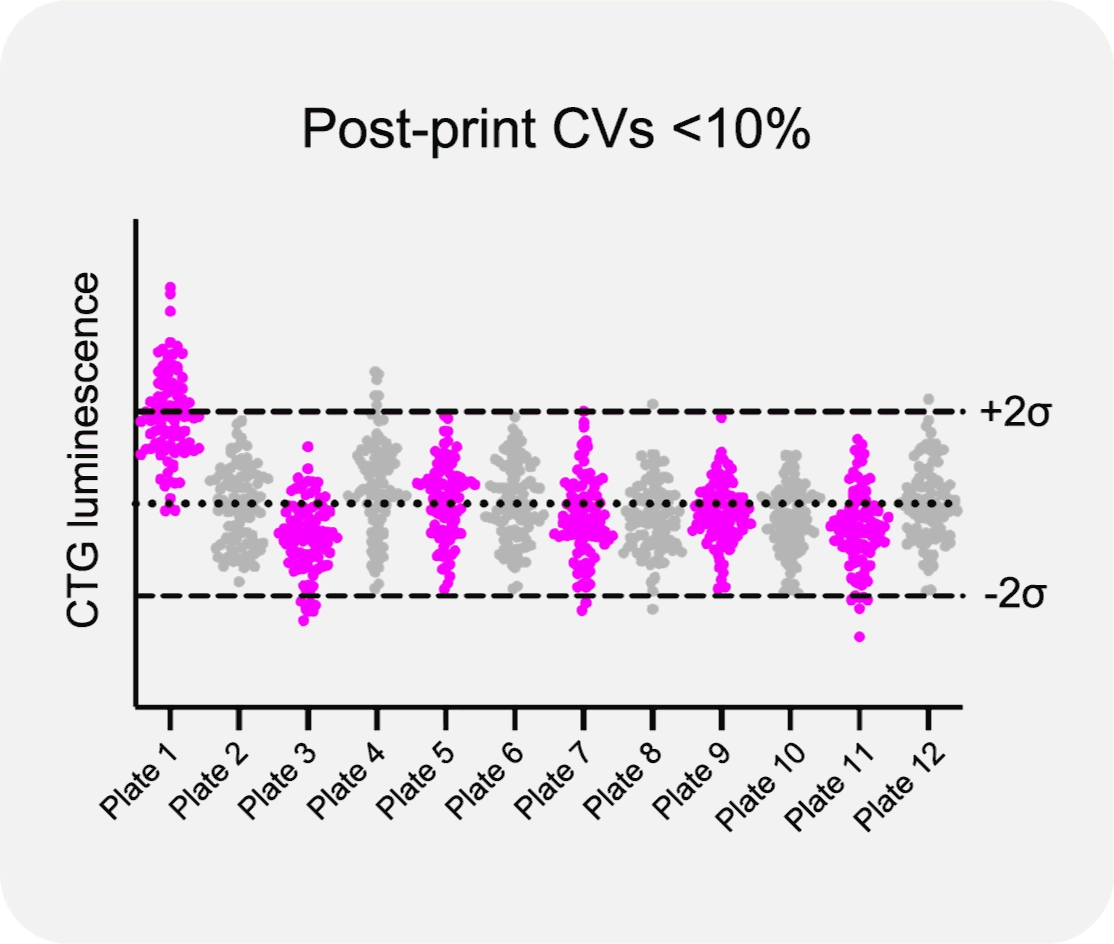
Standardize your 3D cell model production
With RASTRUM Allegro, you can ensure consistent 3D cell model production with post print intra- and inter-plate CVs of <10% and downstream assay CVs of <19%. By minimizing variability, RASTRUM Allegro delivers the reproducibility you need to generate 3D cell models at scale, supporting screening campaigns and enabling meaningful insights and confident decision-making.
The consistency of RASTRUM Allegro in high-throughput screening applications is demonstrated in the figure, showing MCF-7 cells and liver cancer (HepG2) cells printed with Imaging Models across twelve 96-well plates. Post-print analysis demonstrates intra-plate and inter-plate CV values <10%. MCF-7 cells printed as Screening Models in twelve 384-well plates with treatment with paclitaxel chemotherapy drug. Analysis post-treatment demonstrates intra-plate and inter-plate CV values <19%.
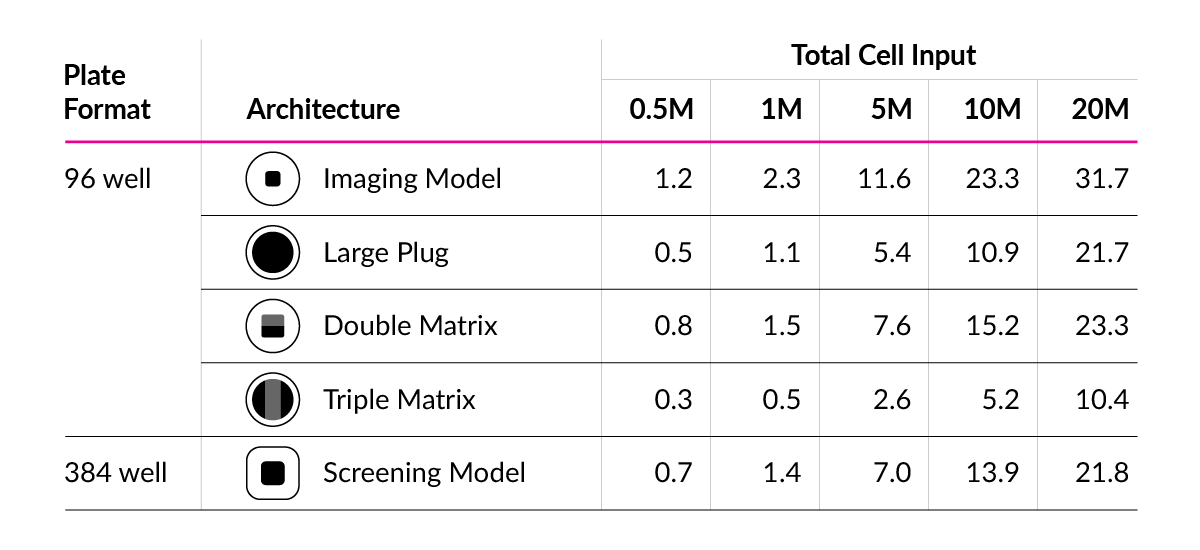
Get more from every sample
With RASTRUM Allegro, you can create more 3D cell models from every sample—even your most precious patient biopsies. By minimizing dead volume and waste, it reduces the number of cells needed for each model, enabling you to produce 3.5x more models from just a few thousand cells. Maximize your resources and advance your research efficiently.
The table at left illustrates the number of plates per model that can be printed on RASTRUM Allegro based on the total cell input (total cell input in millions).
Explore RASTRUM Allegro
How it works
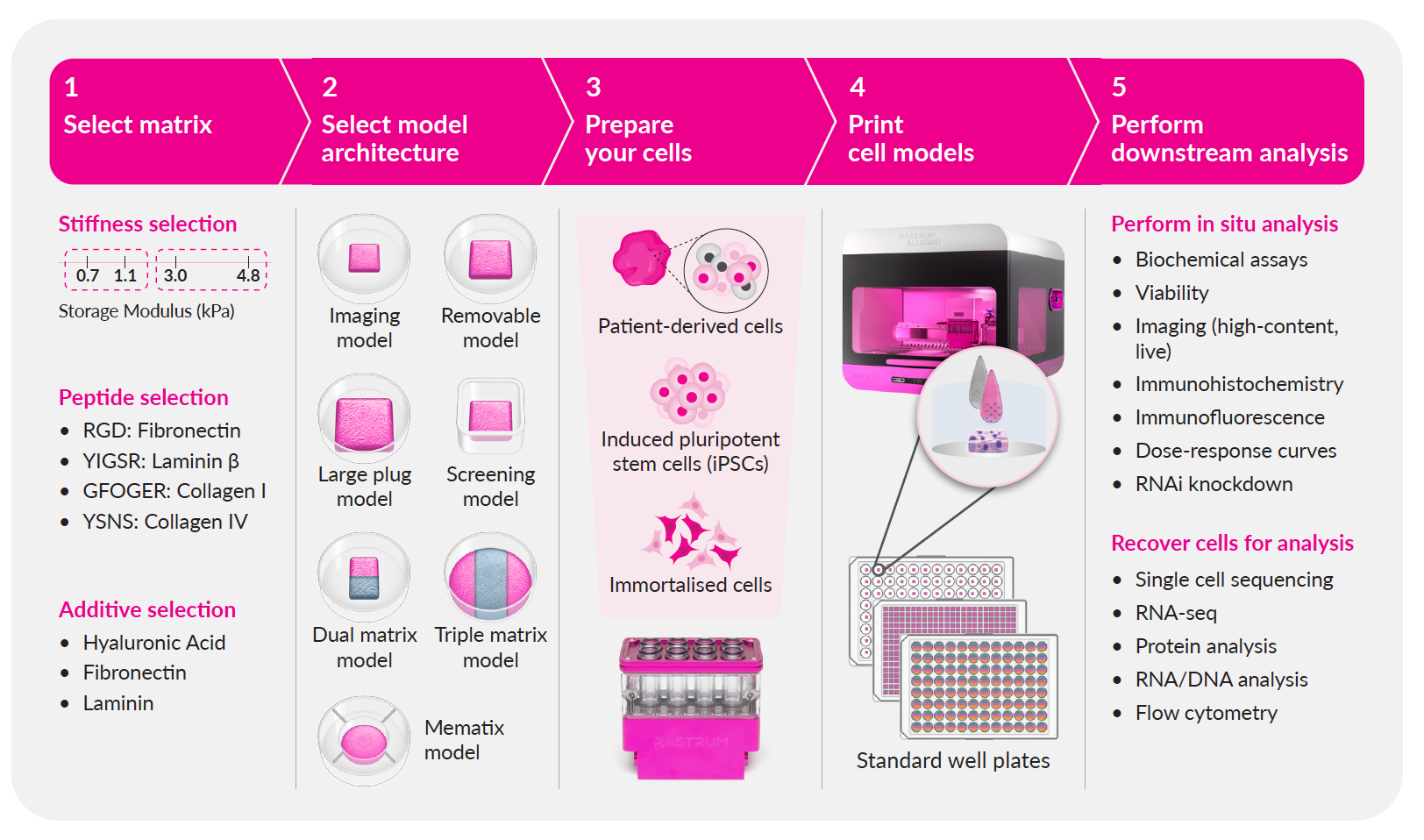
RASTRUM technology is designed to streamline your 3D cell model development from start to finish, delivering biologically relevant results with efficiency and precision. Simply point, click, and experiment with our cloud-based guided experimental design, ready-to-use protocols, and expert assistance.
- Select your matrix: Choose from our large library of flexible, tunable, xeno-free matrices to mimic the tissue microenvironment to suit your research.
- Select your cell model architecture: Choose the structure and configuration of your cell model from our options to suit your experimental needs.
- Prepare your cells: Follow a simple protocol to prepare your patient-derived, iPSC or immortalized cells
- Print your cell models: Utilize RASTRUM's drop-on-demand bioprinting technology to rapidly and reproducibly generate your 3D cell models.
- Perform your downstream analysis: Grow your cells and easily integrate cell model analysis with existing downstream workflows and readouts.


